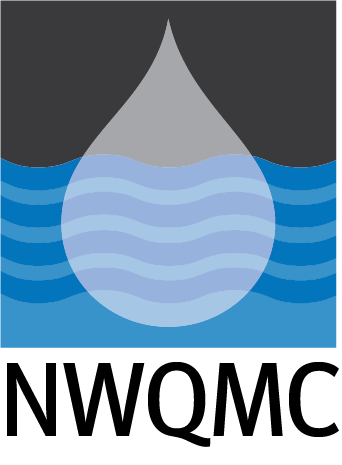Monitoring for the Protection of Aquatic Resources
- Protecting Water Quality – Innovations for integrating biological, chemical, physical, and hydrologic data to maintain and improve water quality. Approaches to evaluate stressors and implement strategies to prevent degradation.
- Public Health – Monitoring methods, prioritization approaches and communicating results to protect public health, including water supply, recreation, fish and shellfish consumption, urban water quality, and subsistence users.
- Monitoring for Ecological Health – Aquatic life use, biological community health (e.g., macroinvertebrates, fish, diatoms/periphyton), biological index development, eDNA, biological condition gradient.
- Policy, Government and Regulation Driving Water Quality Decisions – Advances in Clean Water Act and other programs (WQS, TMDL, etc.) linking monitoring, assessment, prioritization and effectiveness to protect public health and ecosystems.
- Watershed-Based Planning – Innovative approaches in identifying priority areas for application of BMPs and other measures to achieve water quality goals.
- Climate Change – Monitoring, analysis and assessment approaches to determine effects on hydrology, living organisms, public health and water quantity/quality.
- Emerging Technologies – In situ and continuous monitoring, remote sensing, analytical methods, eDNA, passive sampling, AI-based taxonomy
- Groundwater and Surface Water Interactions – Monitoring data applications that inform and refine groundwater-surface water models.
Volunteer Monitoring and Collaboration
- Monitoring Collaboration – Inclusive stakeholder engagement to answer watershed-scale questions including collaboration between National, federal, tribal, regional, state, volunteer and local partnerships and councils.
- Volunteer and Community-Based Monitoring – Examples of programs that leverage volunteer and community scientists to collect data of documented quality to achieve diverse data uses. Data collection to actionable science.
- New Tools and Resources – Examples that support volunteer scientists in bolstering use and dissemination of volunteer monitoring data (e.g., data credibility tools, volunteer engagement, etc.).
Contaminants and Source Tracking
- Naturally Occurring Contaminants of Concern – Monitoring, assessment, and trends of radionuclides, cyanotoxins, arsenic, and other geogenic and biologic contaminants in surface and groundwaters.
- Harmful Algal Blooms (HABs) (freshwater & marine) – Monitoring in coastal waters, lakes, rivers and streams; toxins and related factors for analysis of risk, prediction of vulnerability, and management of exposure; analytical tools and remote sensing for prioritizing, forecasting, management, prevention and treatment technologies.
- Nutrients – nutrient dynamics, public health and ecological impacts; monitoring, analysis and modeling to inform decision making; HAB relationships.
- Contaminant Movement Through Watersheds – Road salt; pesticides, fungicides and herbicides; pharmaceuticals; microplastics and others.
- Persistent Toxic Contaminants – Emerging and legacy bioaccumulative contaminants including PFAS, Mercury, DDT, PCBs, metals, neonicotinoids, and others.
- Aquatic Debris – Approaches for monitoring, reducing, preventing marine/freshwater debris/floatable trash; educational programs; ecological studies, and other topics.
- Emerging Contaminants – 6PPD-Q, PFAs, Microplastics and sorbed contaminants, Cyanotoxins, Vibrio spp., MRSA, 1-4 dioxane, contaminant mixtures and others.
- Source Identification and Fingerprinting – Identifying the contributions of point and nonpoint pollution to our waters (stormwater, atmospheric deposition, Microbial Source Tracking, road salt) locally and nationally.
Open Data Life Cycle
- FAIR (Findable/Discoverable, Accessible, Interoperable, Reusable) and CARE (Collective Benefit, Authority to Control, Responsibility, and Ethics) Data Principles – Common water data management themes that support FAIR including common hydrology, web services, data standards, and common terms.
- Secondary Use of Publicly Available Data – Examples of secondary use of federal, state, and local monitoring program data; Water Quality Portal data use and results, metadata challenges, assuring comparability of data from different sources.
- Moving from Data to Actionable Information – Open data science tools, applications, story maps, spatial modeling, and dashboards for aggregating, analyzing, visualizing, disseminating and transforming data to information in order to improve efficiency and communicate with decision makers and the public.
- Artificial Intelligence and Machine Learning – Applications of AI/ML to monitoring science; emerging approaches and opportunities; ethical use, data-driven decision making; and knowledge transfer across science organizations and stakeholders.
Measuring Success
- Effectiveness Monitoring – Measuring the effectiveness of best management practices and communicating restoration monitoring results to address priorities and track progress in improving the condition of our nation’s waters.
- Water Quality Trends – Long-term monitoring for trend analysis and forecast modeling.
- Lessons Learned in Water Monitoring – Successes challenges and adaptive management in water quality assessments and watershed restoration efforts.
Local (Green Bay Watershed) and Regional (Great Lakes and Midwest) Monitoring
- Monitoring and Research Partnerships
- Hypoxia Issues
- Beneficial Use Impairments
- Legacy Pollutants
- Monitoring to Support TMDL and 9 Key Element Plan Implementation
- Long-term Mussel and Benthic Surveys
- Temporal and spatial coupling of Nutrients and Food Web
- Any of the other conference themes that apply to the region.
Other
The themes and topics above are from past surveys of attendees and Council members and are in no way comprehensive.
